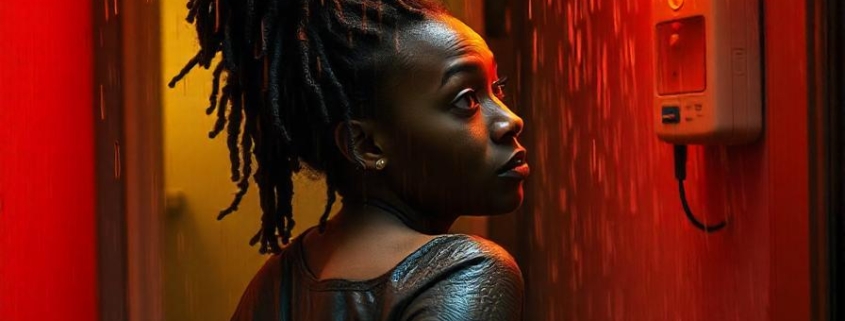
GET OUT if your Carbon Monoxide Detector Goes Off
What to do if your Carbon Monoxide Detector Goes Off? Get out of the toxic place before you call 911. Don’t open windows and doors. GET OUT.
Step 1: Evacuate the Premises Immediately
Once the alarm sounds, take the following immediate steps:
- Ensure everyone exits the home or space: Gather your family members and pets and exit to fresh air as quickly as possible.
- Do not waste time: Do not stop to collect belongings or wait for confirmation of the alarm’s accuracy.
Take the Alarm Seriously
If your carbon monoxide detector goes off, do not ignore it. Treat every alarm as a real threat until you have confirmed it is safe. The presence of carbon monoxide can quickly become life-threatening, so rapid action is essential.
DO NOT REMOVE THE BATTERIES and exit the space immediately.

GET OUT IMMEDIATELY if your carbon monoxide detector goes off. Do not open windows and doors. Call 911 when you are safely outside.
Step 2: Call 911
Once you are safely outside:
Call 911: Inform them that your carbon monoxide detector has gone off.
Do Not Open doors and windows: First responders should open as many doors and windows as possible to help ventilate the space, but only after they have measured the carbon monoxide levels in the ambient air.
Do not re-enter the building until first responders have checked the property, determined the source of the carbon monoxide leak, resolved the problem and given the all-clear to re-enter.
Step 3: Seek Medical Attention
If anyone in your household is experiencing symptoms of carbon monoxide poisoning, such as headache, dizziness, confusion, nausea, or shortness of breath, seek medical attention immediately. Even mild exposure can lead to significant health effects if not treated.
Go to the ER, even if you feel like your symptoms are getting better. If you have problems later, which happens in 40% of carbon monoxide cases, you will need to be able to prove that you were poisoned.
Insist the ER tests your blood for carbon monoxide.
Step 4: Identify and Address the Source
After emergency responders have deemed your home safe to enter, it is crucial to identify the source of the carbon monoxide leak:
- Contact a qualified technician: Have a professional inspect all potential carbon monoxide-producing appliances, such as furnaces, water heaters, gas stoves, and fireplaces.
- Ensure proper ventilation: Confirm that chimneys, flues, and vents are clear and functioning properly.
- Ensure regular maintenance: Schedule regular inspections and maintenance as recommended by the manufacturer for all fuel-burning appliances to reduce the risk of future carbon monoxide leaks.
Step 5: Reset Your Detector
After the issue has been resolved and your home is safe, reset your carbon monoxide detector following the manufacturer’s instructions. This step ensures that the device is ready to alert you again in case of future incidents.
November is National Carbon Monoxide Awareness Month and we thought this topic was the most important topic to share in order to spread awareness related to keeping yourself and your loved ones safe from the dangers of carbon monoxide.
According to the Centers for Disease Control (CDC), carbon monoxide poisoning leads to more than 400 unintentional deaths in the United States each year. More than 100,000 people visit emergency rooms each year related to carbon monoxide poisoning and more than 14,000 of those people are hospitalized.
Remember: Do Not Remove Batteries when Your Carbon Monoxide Detector Goes Off?
Again, it is very important that you not remove the batteries when you alarm goes off because it will reset the thresholds. because carbon monoxide detectors are designed with specific safety thresholds built into the device.
How CO Detectors Are Calibrated
Detectors are designed to reduce false alarms while protecting you from harmful exposure. They follow standards, such as those set by Underwriters Laboratories (UL) in the United States, specifically UL 2034, which includes the following requirements:
- Activation levels: Alarms must meet the following activation levels:
- 30 ppm: The alarm must not activate for at least 8 hours
- 70 ppm: The alarm must not activate before 60 minutes but must activate before 240 minutes
- 150 ppm: The alarm must not activate before 10 minutes but must activate before 50 minutes
- 400 ppm: The alarm must not activate before 4 minutes but must activate before 15 minutes
Understanding PPM
PPM stands for parts per million, a unit of measurement used to describe the concentration of one substance within a larger volume. It is commonly used in environmental science, chemistry, and safety monitoring to quantify very small amounts of pollutants, gases, or other substances in air, water, or soil.
1 ppm means that for every 1 million parts of a mixture, 1 part is the specific substance being measured. For example, if 1 ppm of carbon monoxide (CO) is present in the air, it means that there is 1 molecule of CO for every 1 million molecules of air. 1 ppm is equivalent to 1 drop of water in an Olympic-sized swimming pool.
Removing the batteries in your carbon monoxide detector will re-set the alarm and it will essentially start over, keeping the above measurements and timing in mind. Removing the batteries and re-setting the activation threshold function can place you and your loved ones at great risk.
Carbon monoxide (CO) is a silent, invisible threat that can be deadly if not properly addressed. Having a carbon monoxide detector in your home is an essential safety measure, but knowing how to respond when the alarm goes off is of utmost importance.
Preventive Measures for Future Safety
- Install carbon monoxide detectors on every level of your home and near sleeping areas.
- Test detectors regularly to ensure they are functioning properly.
- Replace detectors as recommended by the manufacturer, usually every 5-7 years.
- Avoid using fuel-burning appliances in poorly ventilated spaces.
- Never run engines like cars or generators in an attached garage, even if the garage door is open.
For more information on Carbon Monoxide detectors, click here. (Link to Post – Carbon Monoxide Detectors are Required for Safety)
Conclusion
A carbon monoxide alarm can be a life-saving warning, but it is only effective if you know how to respond. Acting quickly, evacuating your home, contacting emergency services, and seeking medical attention if needed can make all the difference. By taking proactive steps and understanding what to do when the alarm sounds, you can keep your home and loved ones safe from the dangers of carbon monoxide poisoning.
We encourage you to do your part to spread awareness related to the dangers of carbon monoxide poisoning and share this information.
